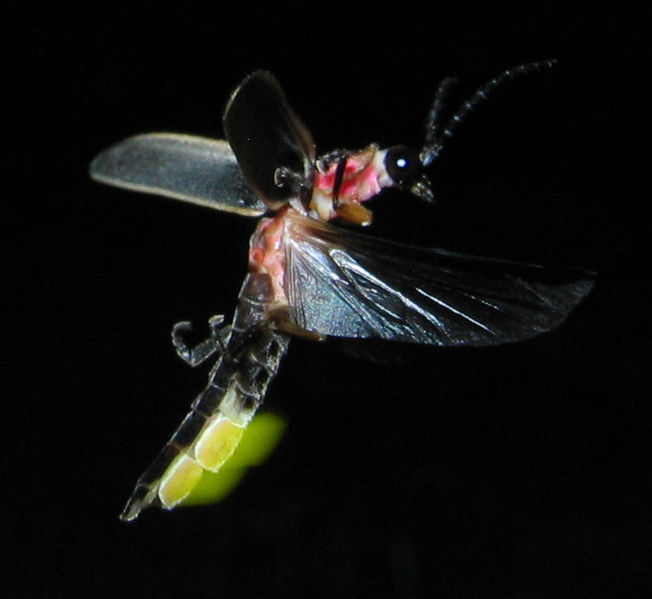Facts
Photinus
marginellus is a very interesting insect that has
captured the imagination of the minds of people ever since
childhood due to the beautiful light structure in their abdomen. The flashing light that enchanted fields and yards of
homes all across North and South America was a reason to
explore the outside, yet as a whole, very little is known about
Photinus marginellus (Luk. et al 2011).
Jamie and I chose Photinus marginellus to help get a better
understanding of the insect that is seen as amazing and
beautiful. The first intersting fact is what seems to be the
most beautiful part of the Photinus marginellus, is
actually a chemical reaction occurring internally, to help
protect the organism for needs of survival.
Figure 1. This complex molecule is called Lucibufagins. The Photinus marginellus produces this compound by means of defense to deter predators by making the organism distasteful.
Photinus marginellus
produces a defensive compound called
lucibufagins
(Fig 1). To learn more about
lucibufagins look at Thomas Eisner's and others through
their document called
Firefly "femmes fatales" acquire defensive steriods
(lucibufagins) from their firefly prey. Lucibufagins is secreted to deter predators from eating them
such as different birds and other vertebrates (Luk, et al 2011;
Eisner et al, 1978). This defensive compound, shown to deter other animals from eating
Photinus marginellus, is
also found in other animals such as toads, glow worms, and even
in plants to also to discourage predators (Eisner et al,1978).
This is a really cool adaptation that Photinus marginellus has
acquired
that is proven to actually work, and has ties to different animals
that have similar defense mechanisms. It is also a reason why
Photinus marginellus is such a tasty treat to Photuris
genus who want to obtain the lucibufagnis steriod, to which they can
not create on their own.
The next cool thing about Photinus marginellus is the
amount of light that is put off in wavelengths versus how much
we actually are able to see.
One thousandths of the energy expanded in to the flash that
Photinus marginellus gives off is converted into heat waves.
The heat
waves go out as visible flashes that our human naked eye can
see. We can see only ten percent of the heat waves that are
given off during these flashes (Townseni, 1904). The fact that
humans are only able to visually see ten percent is amazing! That
means there is ninety percent of heat waves that we cannot see which
adds up to a large amount
of non-visible light still produced. Think of what the flash would look like if
we even just saw twenty five percent… fifty percent? It is quite
a difference.
As one can
see the Photinus marginellus is not just your average insect flashing
about on a summer’s eve. Photinus marginellus is one interesting
insect that can pack a punch, out think its predators, and give
off only ten percent of its heat wave in light. There is so much
more to this small insect than one could ever
imagine.

